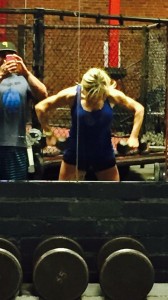The holiday season, while filled with joy and cheer, can also be a challenging time for many. Feelings of anxiety, stress, and depression can creep in, making it difficult to fully enjoy the festivities. But don’t worry, there are simple, effective ways to brighten your mood and navigate the season with greater ease.
The Power of Self-Care
Self-care isn’t a luxury; it’s a necessity, especially during stressful times. Here are a few tips to help you prioritize self-care this holiday season:
- Embrace the Morning Light:
- Why it helps: Early morning sunlight helps regulate your body’s internal clock, improving sleep quality and mood.
- How to do it: Make it a habit to wake up early and spend some time outdoors, even if it’s just for a few minutes.
- Move Your Body:
- Why it helps: Exercise releases endorphins, natural mood boosters that can reduce stress and anxiety.
- How to do it: Find activities you enjoy, whether it’s a brisk walk, yoga, or dancing.
- Fuel Your Body:
- Why it helps: A balanced diet provides the energy and nutrients your body needs to function optimally.
- How to do it: Prioritize protein-rich foods like lean meats, fish, beans, and nuts.
- Hydrate, Hydrate, Hydrate:
- Why it helps: Staying hydrated can improve cognitive function, mood, and overall health.
- How to do it: Aim to drink half your body weight in ounces of water daily.
- Nourish Your Soul:
- Why it helps: Eating whole, unprocessed foods can enhance your mood and energy levels.
- How to do it: Incorporate plenty of fruits, vegetables, and whole grains into your diet.
- Limit the Sugar Rush:
- Why it helps: Excessive sugar consumption can lead to mood swings and energy crashes.
- How to do it: Opt for natural sweeteners like honey or maple syrup and choose fruits for dessert.
- Connect with Loved Ones:
- Why it helps: Strong social connections can provide support and reduce feelings of loneliness.
- How to do it: Spend quality time with friends and family, or reach out to loved ones who live far away.
- Cuddle with a Pet:
- Why it helps: Interacting with pets can reduce stress, lower blood pressure, and boost mood.
- How to do it: Spend time with your furry friend, whether it’s a cat, dog, or other pet.
Remember, you’re not alone. If you’re struggling with holiday stress or depression, reach out to a mental health professional or a trusted friend or family member. By taking care of yourself and seeking support when needed, you can navigate the holiday season with greater peace and joy.














